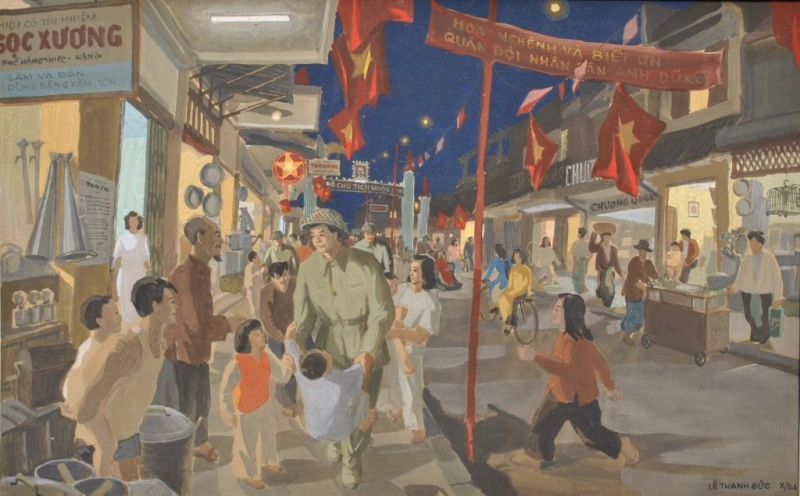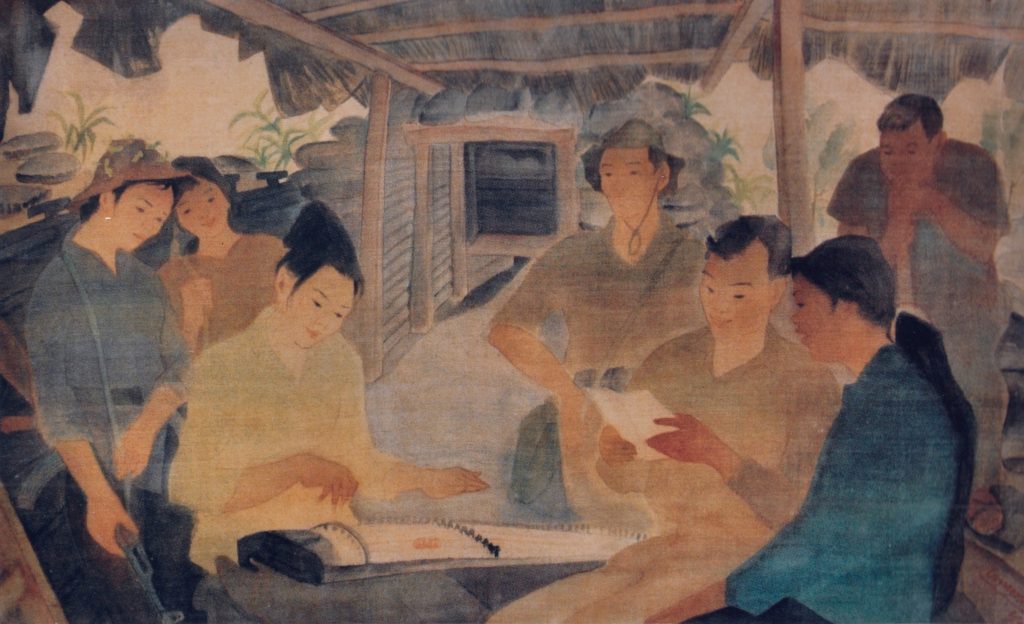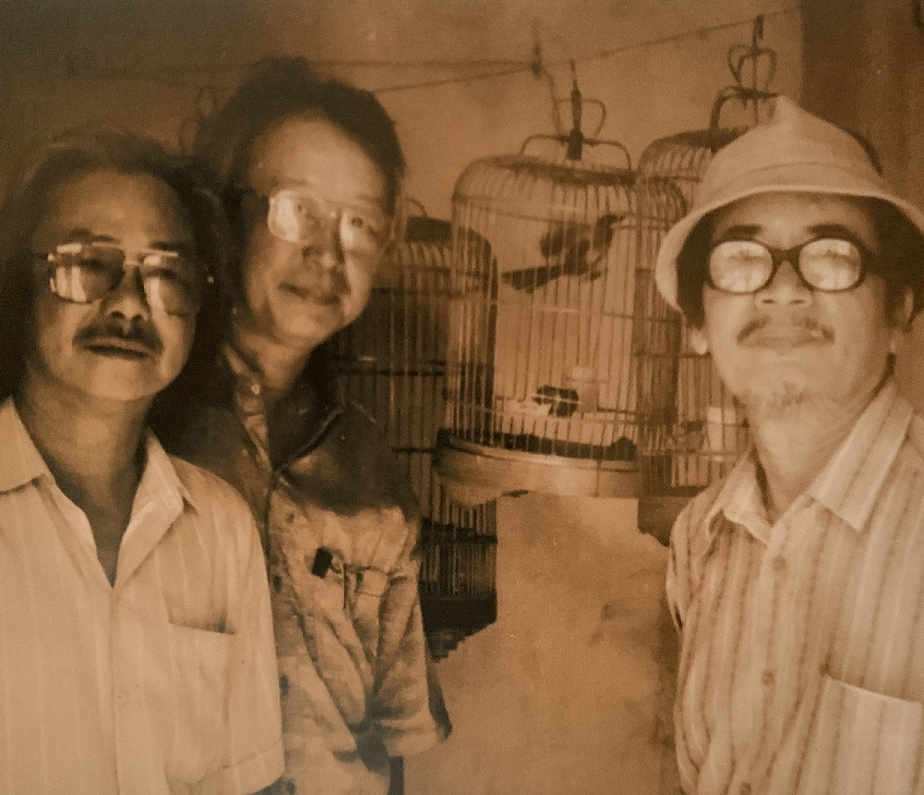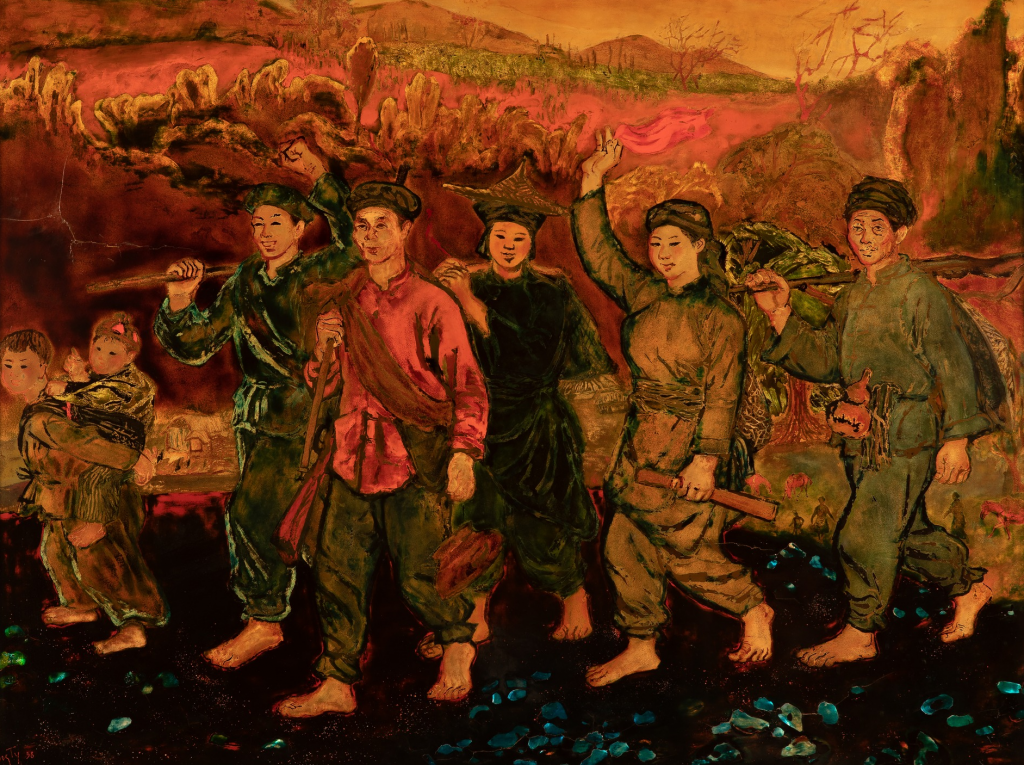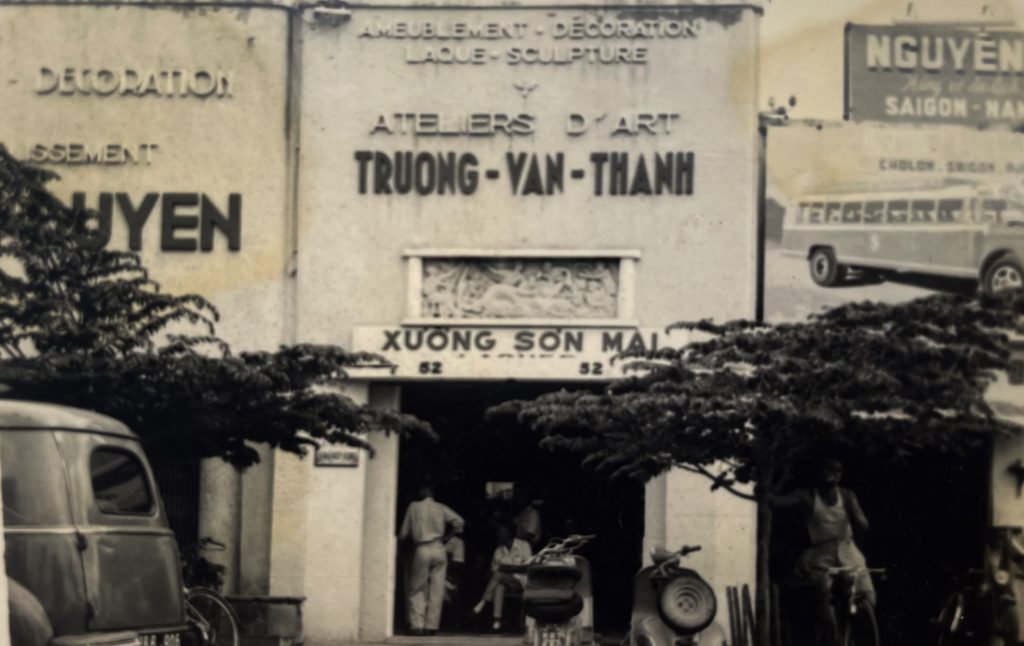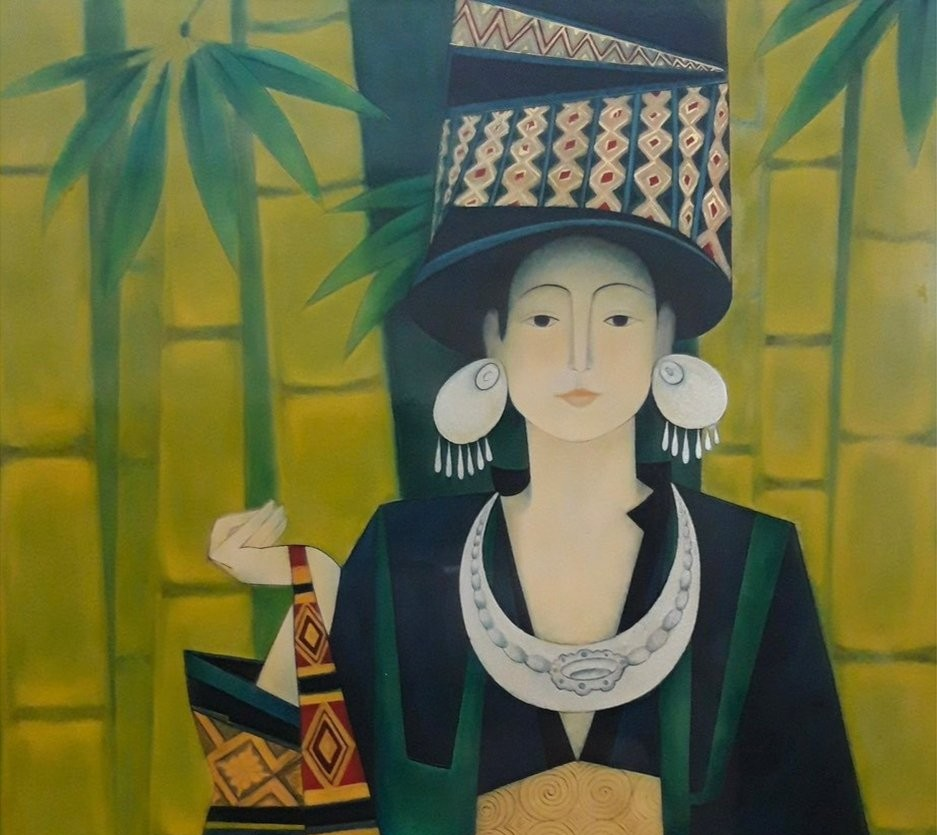The day that Mr. Tardieu was helped by the government to open Hanoi School of Fine Arts, is the day we should mark with a white stone: that day opened a new era for the country’s fine arts.
Thanks to our people with a profound aesthetic, Mr. Tardieu and the professors of the art school over the years have trained a group of painters and architects worthy of the title, they have produced valuable works of art which are not inferior when they come to France to compete with European artists’; there are many famous men and works that have affected daily life of our people; the era I call the Annam art renaissance era.
Because in the past, it’s not that our people were ignorant of fine arts: the architectural works and sculptures left by the Lý Dynasty, the communal house of Đình-Bảng village, the ancient pagoda in Lạn-kha-Sơn, the Temple of literature in Hanoi, and the citadel and mausoleums of Huế…, built about a hundred years ago, show us that in the past, our people still respected fine arts. Although our art was born in China, it still has many special characteristics that can represent the beauty of our nation.
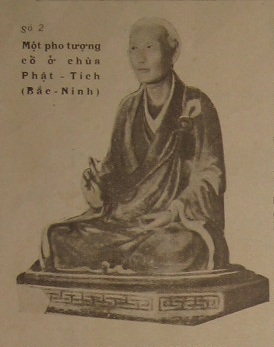
Illustration in the article, an ancient statue at Phật Tích Pagoda, Bắc Ninh.
—
But since then, perhaps due to destiny, our art has gone through a period of decline: the houses, temples, and mansions built in those days are almost all masterpieces of a time. The aesthetic decadence: the models are ridiculous and cost a lot of money, if it is noticeable, it is only noticeable because it is expensive but not beautiful, we see it as a real thorn in front of our eyes. Then because of that, because we cannot produce a few valuable artists, the intellectuals have gone astray, not knowing the difference between ugly and beautiful satisfactorily; The industries that apply to our own living that need to take the art industry as their base, produce objects with no identity. These products are all created by imitation, but such imitation is never as beautiful as the original. Similar to others, but not as beautiful, cannot be sold.
Judging by the works that have been produced in recent years, the art school has a major, very proper, and sustainable trend in view: embracing East-West mediums to create an Annamese art. Such as oil and pastel painting of the West, the way of painting on silk of the Chinese, in painting, the way of sculpting statues with plaster, stone, artificial stone, in sculpture, using reinforced concrete and wrought iron in architecture, Chinese and Japanese lacquer styles in painting are the means we have acquired, used for transformation, and have turned into sharp and rich advantages for the artist in at the time of creation.
Having that tool in hand, the artist now comments on the beauties of people or scenes, paints them on a picture or casts on a statue, records a moment of timeless beauty, brings people to the magical world of colors and shapes. If the title is not the main point in a painting, if it is only an excuse for the artist to describe his heart fluttering before the scene, we also admit that artists have been searching for those beauties in front of the scenes we often see every day, but not unfamiliar: a sitting posture of a young woman, the shadow of bamboo by the pond, the evening scene on the banks of the Hanoi River, the peaceful scene in a family… Because of that, these works have the isolated character of our people, and we find it easy to feel and love the profound charm of the country.
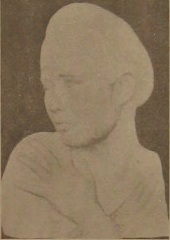
Illustration in the article, the sculpture of Mr. Trần Ngọc Quyên in an exhibition.
—
Architecture should be even more isolated, because it must match the lifestyle of a nation.
The scale, the materials used in the construction, we can change for convenience with our living, but the houses built should be in harmony with the surrounding scenery and with the people who come to live in it.
The models of houses, temples, and mansions produced by architects studying in art schools are all valuable for that means: if they are built, they will be beautiful and convenient, but not as extravagant as some types of houses which are as massive as we’ve seen, it only has a showy appearance to people.
We should not forget to think about the influence of these arts on small industries that are very important in the economy: industries related to people’s food, clothing, and household. Silk weaving, furniture making, pottery, porcelain, lacquer, shoe making or vase making, most of all, rely on fine arts. Fine arts flourished, those professions also prospered, because beautiful models made beautiful things.
—
If we keep an eye on it so optimistically, then the artists will probably lie on the pile of gold. The truth is not like that. They all faced many difficult steps while trying to put their learning skills to the test. There were also many students from art schools, but a few of them were recruited by the government to teach in public schools, and besides, they had to find a way to make a living. Paintings, only Western people know how to enjoy, spend money to buy, while the rich people still prefer ivory or antique porcelain. Some paintings on silk by Mr. Nguyễn phan-Chánh were printed in color by Illustration newspaper, paintings by Mr. Nam-Sơn, Lê-Phổ and Tô-ngọc-Vân were sold in France, two paintings of Mr. Tô-ngọc-Vân painted in the king’s palace, those are just a few works that sell for a considerable price. Our technologists don’t pay much attention to fine arts, because the models they made or obtained from any promotional book, they thought that it was already very beautiful, they did not need to use the talents of Annamese artists. Actually, thinking like that is not right: it narrows the field of activity of our artists and prevents our technology from progressing.
—
Faced with such a difficult situation, the artists and the industries have known to unite: the establishment of Vietnam Association for the Revival of Fine Arts and Technology will be the foundation for the collaboration of artists and technology. This year’s exhibition organized effectively: more than ten thousand people visited within ten days. And the association has been given control by the government, in terms of art, the quality objects we have and want to bring out. Although it is a constraint for manufacturers, but it is useful for technology in general, I think that if the association knows how to use that right impartially, it can increase the value of our people’s exports.
—
We go then we can arrive if we make the right direction. And what better way to go than to strive to create a valuable art—The results we see give us confidence in the future. The paintings of our famous painters were bought and rewarded by the French with very precious prizes, the styles of houses of Mr. Nguyễn-cao-Luyện, Võ-đức-Diên, the types of rural houses of Mr. Nguyễn-cao-Luyện, the high, airy, beautiful houses that many people have followed, the woodcut paintings of Mr. Trần bình Lộc, Cát Tường are popular in every house, the statues of Mr. G. Khánh and Trần ngọc Quyên, the new clothing fashion initiated by Mr. Cát Tường, I can’t remember to mention all, is a symptom that our fine arts are in the midst of an evolutionary spurt that resonates with the masses. As for the difficulties that artists encounter while pursuing the profession, it is inevitable, but not impossible to overcome.
Article of author Minh Trúc on the old Ngày Nay newspaper.


